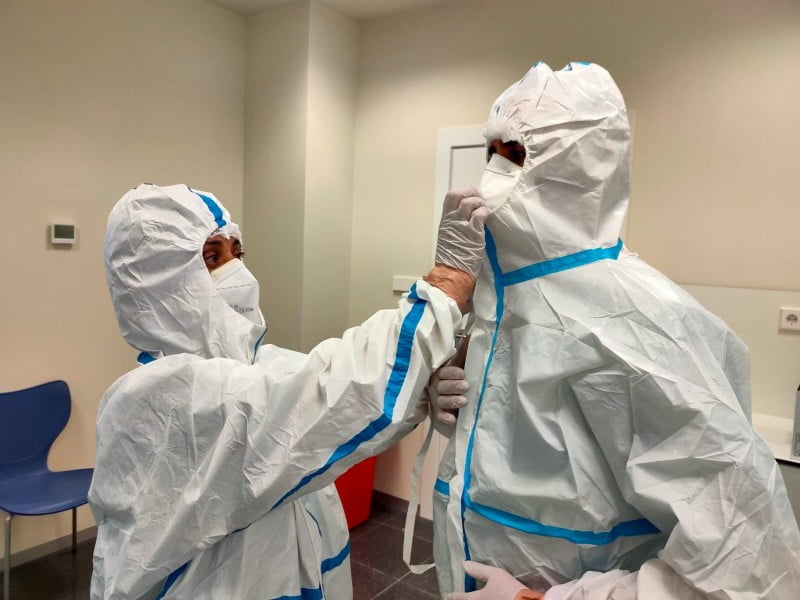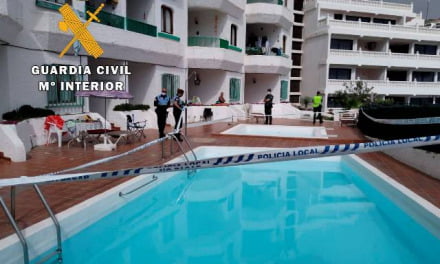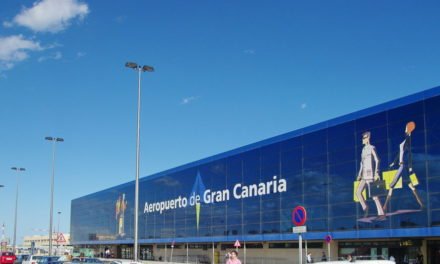The British variant of SARS-Cov-2 , B.1.1.7, is now the dominant strain on The Canary Islands. In December it already accounted for 10.7% of all cases detected on the island of Tenerife, it has now gone on to account for between 80% and 90% of all diagnoses in the Archipelago. This was confirmed by the genetic sequencing data supplied to The Public Health Department from the Nuestra Señora de La Candelaria University Hospital and the Technological and Renewable Energy Institute (ITER) where sequencing work is carried out.
 The variant, known as the British variant because it was first identified in the UK, already dominates most European countries – and also most of the Spanish autonomous communities – as well as many other regions such as Israel. It’s rapid expansion has been put down to its greater transmissibility. The Ministry for Health say that it could also be more lethal, although some studies have linked the higher death rates with its rapid dispersal, since it causes a higher percentage of detected cases to end up in hospital and, therefore, generates more healthcare pressure. This is being closely studied. In eleven of Spain’s 17 autonomous communities the variant already accounts for more than 70% of newly detected infections and in five communities it is already predominant in more than 90% of new cases. These communities are Asturias (98.7%) Cantabria (95%), Galicia (95.3%), Navarra (93.7%) and Catalonia (90%), in addition to the Canary Islands, who have not offered data on their epidemiological status to Spain’s Ministry of Health. The autonomous community with the lowest dispersal of the British variant is Castilla y León, where only 51.3% of diagnosed cases have this mutation.
The variant, known as the British variant because it was first identified in the UK, already dominates most European countries – and also most of the Spanish autonomous communities – as well as many other regions such as Israel. It’s rapid expansion has been put down to its greater transmissibility. The Ministry for Health say that it could also be more lethal, although some studies have linked the higher death rates with its rapid dispersal, since it causes a higher percentage of detected cases to end up in hospital and, therefore, generates more healthcare pressure. This is being closely studied. In eleven of Spain’s 17 autonomous communities the variant already accounts for more than 70% of newly detected infections and in five communities it is already predominant in more than 90% of new cases. These communities are Asturias (98.7%) Cantabria (95%), Galicia (95.3%), Navarra (93.7%) and Catalonia (90%), in addition to the Canary Islands, who have not offered data on their epidemiological status to Spain’s Ministry of Health. The autonomous community with the lowest dispersal of the British variant is Castilla y León, where only 51.3% of diagnosed cases have this mutation.
The South African variant (B.1.351), by contrast has only been detected in three isolated cases and 9 other outbreaks detected in Spain (in which the total number of cases involved was 72 people). 29 of these cases have been confirmed by sequencing. Two outbreaks and two sporadic cases are related to travel to Tanzania (11 cases), Cameroon (2 cases), South Africa (1 case) and Equatorial Guinea (1 case) respectively. Regarding the Brazilian variant (P.1), just 9 cases of this variant were reported in the Canary Islands, in December, associated with a hospital outbreak on Gran Canaria.
A Covid outbreak resulted from a wake held on March 15 in Arrecife (Lanzarote), which is still undergoing follow-up, but has already added 19 detected cases of Covid-19, two of those are in the ICU, admitted to the Intensive Care Unit of the Hospital Molina Orosa, aged 31 and 60 years old. The first person affected by this outbreak, according the the Health Department, was detected in Las Palmas de Gran Canaria on March 18.
The Hospital de La Candelaria on Tenerife yesterday reported an outbreak of coronavirus affecting 18 individuals, two of which are health workers who have been vaccinated, on the 8th North floor of the centre, where Otorhinolaryngology and Neurology services are located. The other 16 were all patients who were alreadyin hospital and have been referred to the Covid-19 ward. This outbreak forced the hospital to reschedule non-serious surgical interventions.
Gran Canaria has added 57 new outbreaks, of the 99 found throughout the Archipelago, representing a total of 577 cases. On Gran Canaria an outbreak, that occurred in the work and family environment, has infected at least 13 people, and is related to the security forces. Four out of the five new outbreaks in educational settings, have also been reported on this island. The number of people affected totals 32 (11, 8, 8 and 5 people). The other outbreak in an educational setting occurred in Fuerteventura and now includes 12 people.
Infection rates slowed yesterday
Both Gran Canaria and Tenerife reported reduced diagnoses yesterday. Tenerife, adding 111 cases, reduced its contagion rate by 3.6% compared to the previous week, which together with epidemiological indicators that predominate at risk level 2, shows a positive trend for the island. However, Tenerife still maintains a high ICU occupancy for Covid patients, currently at 18.9% of their capacity, which places them at a high risk level.
Gran Canaria, added 113 new cases yesterday reducing its ascending rate of infections. However, four of its risk indicators remain at high risk.
Fuerteventura added 12 cases and La Palma, Lanzarote and El Hierro 1. The latter means that El Hierro is no longer free from Covid-19.










